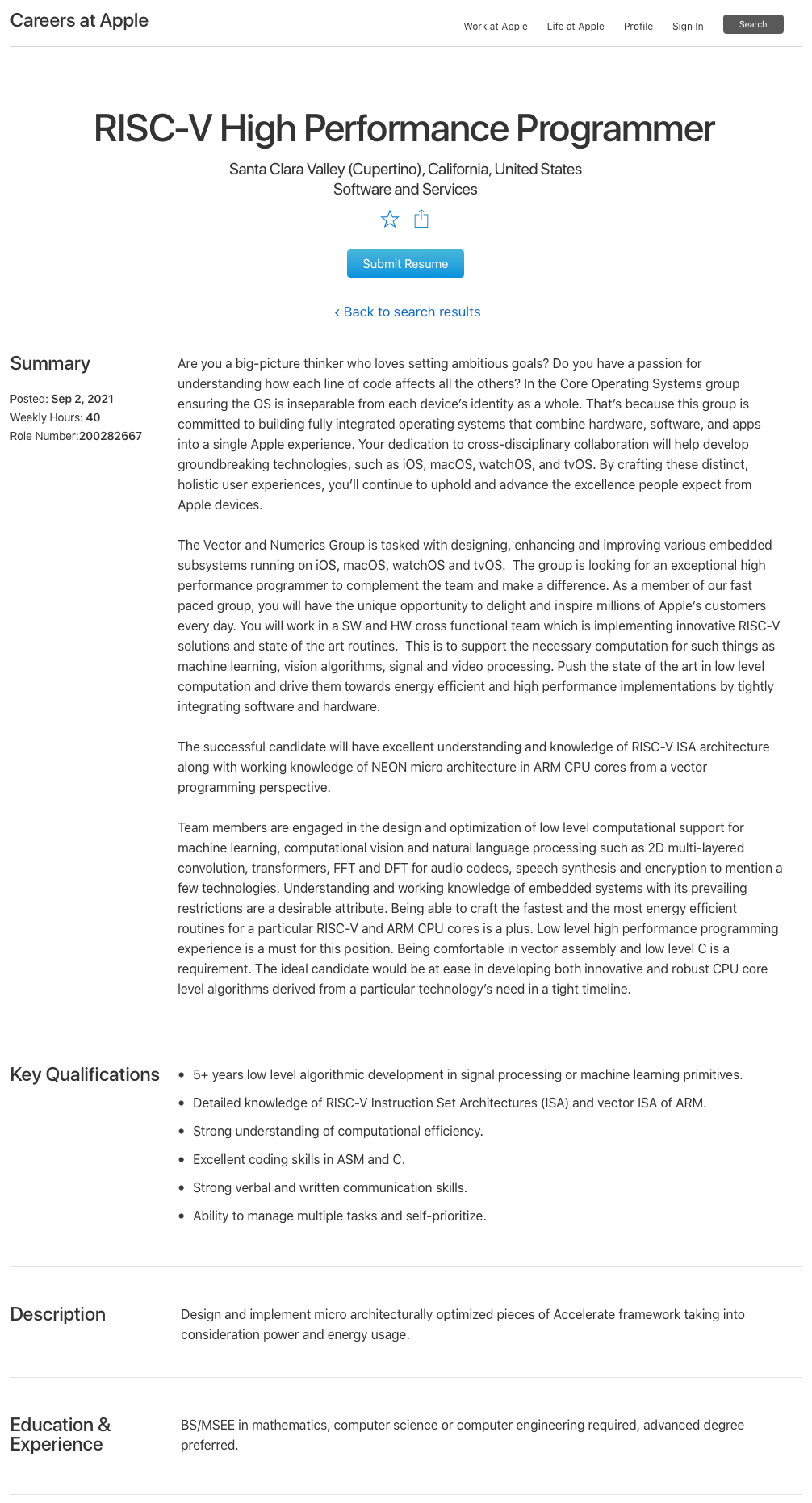Apple Exploring RISC-V, Hiring RISC-V 'High Performance' Programmers
Apple is in the process of switching its PCs to Arm-based SoCs, but the company might not be putting all its eggs into one basket, as it is also exploring the emerging open-source RISC-V architecture. This week the company posted a job alert for RISC-V high-performance programmer(s).
Apple is currently looking for experienced programmers with detailed knowledge of the RISC-V Instruction Set Architecture (ISA) and Arm's Neon vector ISA for its Vector and Numerics Group (VaNG) within its Core Operating Systems group. Apple's VaNG is responsible for developing and improving various embedded subsystems running on iOS, macOS, watchOS, and tvOS.
Known for its secrecy, Apple's listing doesn't disclose exactly what it plans to do with RISC-V, but the job description indicates that the programmer will have to work with machine learning, computational vision, and natural language processing. Among other things, low-level high-performance programming experience is required. Furthermore, the job description also indicates that Apple is already working with RISC-V.
"You will work in a SW and HW cross functional team which is implementing innovative RISC-V solutions and state of the art routines," the description reads [emphasis added]. "This is to support the necessary computation for such things as machine learning, vision algorithms, signal and video processing. Push the state of the art in low level computation and drive them towards energy efficient and high performance implementations by tightly integrating software and hardware."
Currently, Apple has dozens of products across multiple product lines. For example, high-performance devices like MacBook laptops, iPhone smartphones, iPad tablets, and Apple TV set-top-boxes are based on custom system-on-chips (SoCs) that use highly-customized Arm cores. In addition, devices like Apple's Watch, Airpods, and Homepod Mini use system-in-packages (SiPs) powered by technologies from Arm. Apple also uses Arm cores inside its controllers (e.g., T2, W3, U1, etc.).
All-in-all, in addition to the SoCs that power the devices that make it to headlines, every Apple device these days has numerous Arm cores (in fact, there are some controllers still powered by x86). Every Arm core requires Apple to pay a licensing fee to Arm, and since the number of cores for things like SSD controllers and smartwatches will only increase, so will Apple's payments to Arm. As such, replacing at least some Arm cores with RISC-V cores could save Apple millions of dollars in royalty payments every year, much like Western Digital adopted RISC-V cores for its low-power solutions years ago.
But the integration of custom RISC-V cores into the Apple ecosystem requires the company to prepare a software stack and ensure that everything works flawlessly. This is where programmers familiar with RISC-V and Arm's vector architecture come into play.
Get Tom's Hardware's best news and in-depth reviews, straight to your inbox.
Given that Apple is already working on RISC-V solutions, it is likely now only a matter of time before the company replaces certain types of cores with RISC-V. However, it remains to be seen is how far Apple will be willing to go with its RISC-V initiative. RISC-V currently focuses on lower-performance applications, but the ISA is developing fast, and the first high-performance RISC-V designs will emerge soon.

Anton Shilov is a contributing writer at Tom’s Hardware. Over the past couple of decades, he has covered everything from CPUs and GPUs to supercomputers and from modern process technologies and latest fab tools to high-tech industry trends.
